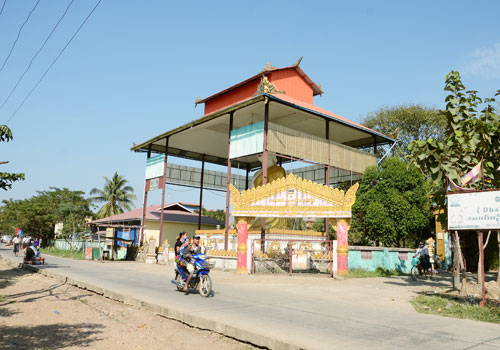

 Local real estate agents in the south-west of Yangon are backing a range infrastructure development projects to boost demand for real estate in outskirts of the city, in areas such as Dala, Kawhmu, Kungyangon, Sikkyi Kanaungto and Twante townships.
Local real estate agents in the south-west of Yangon are backing a range infrastructure development projects to boost demand for real estate in outskirts of the city, in areas such as Dala, Kawhmu, Kungyangon, Sikkyi Kanaungto and Twante townships.
U Aung Thu, a real estate agent in Dala township, said investors were interested in that area because of improving connectivity with projects like the impending Yangon-Dala bridge.
“Many speculators are interested in investing on the outskirts of Yangon these days,” he said. “In the past there was no interest because there wasn’t a bridge joining these townships to Yangon.”
Investors are more interested to buy the land than apartments or housing units, he said. “Although the real estate market has cooled, speculators are looking at the land surrounding Yangon.”
The Dala-Yangon river bridge will be constructed between downtown Yangon’s Lanmadaw township and Phone Gyi Road in Dala township.
Last November the Myanmar and South Korean governments agreed that South Korea’s Economic Development Cooperation Fund would issue a US$137.8 million loan over 40 years at 0.01 percent interest to finance the bridge, which is estimated to cost around $168.2 million. Myanmar’s construction ministry will pay the rest.
Work is likely to begin in 2017, U Kyaw Li, permanent secretary at the ministry told The Myanmar Times in August.
Meanwhile, agents are hoping that the potential new city development projects - an ambitious plan to build seven new cities around the outskirts of Yangon - will eventually come to fruition and lead to increased demand, said U Aung Thu.
Uncertainty surrounds the new city development projects, however, as they are currently awaiting further review under the new government’s planning, as it assesses project priorities and development value for residents.
Other local initiatives such as the World Bank’s National Community Driven Development project, which provides funding and technical assistance to a number of townships to complete their own infrastructure development, will bring better transportation and infrastructure to many townships, making them appealing investment options, U Aung Thu added.
Despite uncertainty surrounding the Southwest New City - one of a number of satellite cities planned as part of the new city development projects - it would benefit Seikkyi Kanaungto and Twante township transportation, he said, while and the World Bank’s project has infrastructure upgrades planned for Kawhmu and Kungyangon townships.
If the Dala-Yangon bridge is then constructed these townships will then be directly connected to downtown Yangon, further improving the transportation links and bringing new job opportunities, said U Aung Thu.
“The land in these underdeveloped townships has potential for high demand, but the land price has not gone up in line with other areas,” he said.
Ko Kyaw Naing, a resident real estate agent in Kawhmu township, said that although demand for land in that township was gaining traction.
The new roads being built should prompt more interest from land investors, Ko Kyaw Naing added.
“Now that new roads are being built by the government, transportation is getting better and investors are showing more interest,” he said. “In the past, it could take one day to get to downtown Yangon because there were no concrete roads. Now it’s down to three hours and if we get the Dala bridge it will be 30 minutes from Kawhmu township.”
Kawhmu and neighbouring townships are lacking in job opportunities and the long journey makes downtown commuting difficult, said Ko Kyaw Naing.
Still, speculation was one thing, real investment in garment or beverage factories, would be key to improving the area and market sustainability, he added.
Given the congestion in central areas of the city, the outskirts of Yangon were certainly a potential area for development, said U Toe Aung, deputy head of Yangon City Development Committee’s City Planning and Land Administration Department and director of Urban Planning.
“Although over 1000 people are living in 1 acre in downtown areas, less than 10 people are living in 1 acre on the outlying townships of Yangon,” he said.
He said he could not confirm, however, the status of the planned new city projects currently under review.
Developing the outskirts and creating jobs would help redress the imbalance in population density, and should help reduce traffic problems and unemployment in the developed urban centre of Yangon, he said.
Quoted from mmtimes.